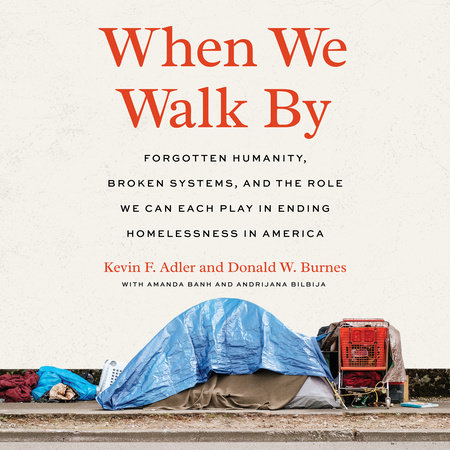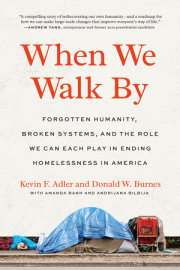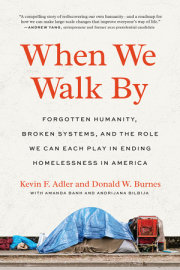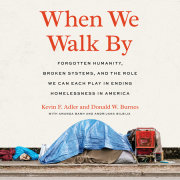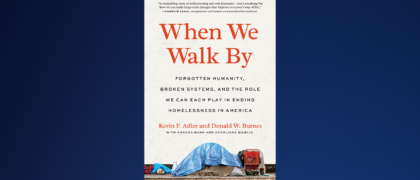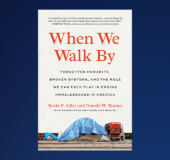Not in My Backyard When most of us think about “the homeless,” we do not see the loneliness, the isolation, the exhaustion, the lack of agency in deciding even the most basic choices of the day—what to eat, when to eat, when to use the bathroom and bathe, where to sleep, who to interact with, how to feel safe. We do not see the stories of bravery, the fortitude it takes to live in a society where no one seems to acknowledge your presence, let alone your inherent dignity. We are not confronted with the mental and physical resilience that our unhoused neighbors must exert to survive days, weeks, months, years, or even decades of relational poverty and housing insecurity, almost always amid chronic illness, untreated injury, and ongoing trauma. The experience of homelessness is foreign and incomprehensible to most of us, and frankly we prefer to keep it that way.
In our brains, news media, and daily conversations, we form, reinforce, and validate a separate group that we call “the homeless,” instead of getting to know the actual people who are experiencing homelessness in our midst—for if we ventured too close, we might recognize ourselves. So for the most part, we live in two separate worlds. No wonder that the participants in the NYC Rescue Mission experiment did not register their family members who were dressed up to look homeless; their family members might as well have been wearing invisibility cloaks or hiding behind bushes.
Where our worlds do intersect, we are left feeling frustrated, disgusted, angry, cynical, and helpless—which often gives way to NIMBYism. NIMBYism, or the “Not in My Back Yard” phenomenon, is typified by residents who oppose new housing developments near their homes, especially affordable and denser housing, homeless shelters, treatment centers, and the like.
At its core, NIMBYism involves a narrowly defined self-interest that excludes people and behaviors that we perceive to be unlike ourselves, such as people experiencing homelessness. NIMBYs who oppose new housing projects in their neighborhoods for people emerging from homelessness cite fears of physical safety, drug paraphernalia, broken bottles, vandalism, and robbery to justify their exclusionary posture, on the assumption that our unhoused neighbors are untrustworthy riff-raff, or that their presence in a neighborhood would be at odds with the local character, which must be defended. Anything that may pose a potential threat to NIMBYs––namely their children, their property values, or their idealized version of where they live–– must be stopped. Rampant levels of NIMBYism throughout the country push people experiencing homelessness further to the margins, concentrating them on skid rows and tent islands rather than working to help integrate them into neighborhoods, where we can all thrive. As Chris Herring suggests, the effect of NIMBYism is to exclude and seclude people experiencing homelessness, forcing them away from everyone else and into less desirable, more dangerous spaces.
One of the perpetual fears of NIMBYs is that by providing housing or other facilities for people experiencing homelessness in their neighborhood, crime will increase. Two recent studies in Denver suggest just the opposite. In an evaluation of the tiny home village in the Mile High City, rates of crimes in four major categories declined within a quarter mile of the village, including substantial decreases in robbery and drugs and narcotics. An article in the
Colorado Sun indicated that, although there was a 14.3% increase in crimes between 2020 and 2021 for the city as a whole, there was actually a 2.8% decrease in crimes in the six neighborhoods where there were sanctioned (or supported) encampments for those experiencing homelessness, known locally as Safe Outdoor Spaces.
But this begs the question: if the fears associated with NIMBYism are mostly boogeymen, then what else might be motivating the contingent of people who want to “safeguard” their communities by closing them off?
Ultimately what underlies NIMBYism is the presumption of intractable differences between “us” and “them,” with the most fundamental difference being one of who belongs here and who does not. We might describe this as
placehood, or who is perceived to have the right to be in a particular area: of course, we are welcome here, but they are not.
But this exclusionary tendency is based on the xenophobic and wildly inaccurate belief that most people experiencing homelessness are not from the area where they are currently homeless. In reality, many of our unhoused neighbors were once our housed neighbors (and family members, friends, and former classmates). A 2019 article by the journalist Inyoung Kang in the
New York Times entitled “Where Does California’s Homeless Population Come From?” illustrates this widespread misconception in the context of Los Angeles County, first by quoting West Coast readers’ misguided questions (we’ve chosen to use readers’ first names only), and then by laying out the actual data:
Christine, a reader from Stockton, wrote: “Where are the homeless people from? If they are transplants, when did they come to California, what brought them here, and how did they end up in their current circumstances?”
Another reader, Jim, from Santa Cruz, wrote that he believed “many, if not most” of the homeless people he saw were not native Californians. He asked: “Why is California bearing the brunt of this national crisis?”
Elizabeth, a reader in Seattle, echoed his sentiments, saying: “Do many homeless or near-homeless move to politically liberal areas, making the assumption that they will receive more assistance?”
The
New York Times article looks at data from the 2019 homeless count by the Los Angeles Homeless Services Authority, the agency that conducts the largest homeless census count in the country. According to the agency’s report, 67.6% of the 58,936 Los Angeles County resi-dents experiencing homelessness had lived in the county for more than 10 years, and 75.2% had lived in the county for more than five years. And 75.5% of respondents said they had lived in Los Angeles County or another county in Southern California prior to becoming homeless, a figure that bumps up to 80% when somewhere else in California is included as an option. In other words, most of the individuals experiencing homelessness that Californians walk by are fellow Californians. As Kang poignantly writes, “Some may have rented an apartment or once owned a home in your neighborhood. Now they sleep in an encampment near the freeway you take to work each morning.” Or as Peter Lynn, the former executive director of the Los Angeles Homeless Services Authority put it, “This is a local crisis and a homegrown problem.”
Considering all of this, “Not in My Back Yard” is a misnomer; “Already in My Back Yard” (AIMBY) would be more appropriate. Or if we also look at the data about migration to California from other states, which shows that the largest group of transplants are actually college-educated professionals, an even more accurate acronym might be PHITALBTPBYWY: “Probably Here in This Area Long Before That Particular Back Yard Was Yours.” It’s a mouthful, but something needs to be said to counter the narrative that “the homeless” are mostly out-of-state transplants, which is used by NIMBYs and politicians to justify excluding them. But perhaps Christine, the reader from Stockton and a lifelong Californian, has a healthier suggestion than trying to popularize an unwieldy new acronym: “I hear a lot of people complain that the homeless people are all from ‘somewhere else.’ I think it might raise empathy and compassion if it turns out that the majority of the people who have been displaced are from the very communities in which they are now trying to survive on the streets.”
Copyright © 2023 by Kevin F. Adler and Donald W. Burnes with Amanda Banh and Andrijana Bilbija. All rights reserved. No part of this excerpt may be reproduced or reprinted without permission in writing from the publisher.

